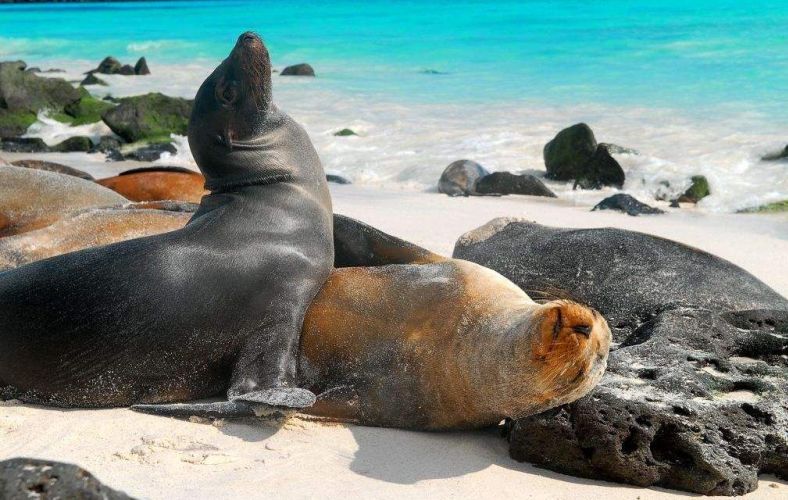Galapagos National Park Regulations
The Galapagos Islands are a Natural Sanctuary and one of the most beautiful places on earth and it’s a big responsibility to the Ecuadorian people to keep this treasure for the next generation. As a mean of protection the Ecuadorian government has established laws that do not allow conventional tourist operations on the islands. For this reason our touristic professionals have to follow strict guidelines when planning visits and to the Islands.
Weather conditions, limitations in the touristic transportation, navigation permits, daily tourist quotas, operations and logistical shipments, and capacity of the yachts, are just some of the reasons that Gray Line Galapagos have to change the passengers’ itineraries. Unfortunately these last minute changes can produce discomfort in the clients.
Please note that its very important to advise the clients that their itinerary are subject to change for the above reasons but that our company is committed to satisfy the clients expectations.
Finally, please review the followings Galapagos National Park laws. Abiding by these laws will help to conserve life on the Islands.
– Be careful not to transport any live material to the islands, or from island (this includes insects, seeds, soil). You are not allowed to bring pets to the islands
– No plants, rocks, animals or their remains, such as bones, pieces of wood, corals, shells, or other natural objects should be removed or disturbed. You may damage the islands ecological conditions
– Animals should not be touched or handled. Consequences are serious, for example a sea lion pup will be abandoned by its mother if she smells the scent of a human on her young. The same applies to chicks of birds
– Animals may not be fed. It may alter their life cycle, their social structure and affect their reproduction
– Do not disturb or pursue any animal from its resting or nesting spot. This is especially true for birds such as boobies, cormorants, gulls, and frigates. The nests should be approached carefully, keeping a distance of at least 1 to 2 meters. If disturbed, the bird will flee and abandon its egg or chick, which could be predated or die under the strong sun within 30 minutes
– The visitor must follow the trails, marked with small black and white posts, and never leave it. If you do so, you may destroy nests without being conscious of it (marine iguanas nest in the sand)
– Litter of all types must be kept off the islands. Disposal at sea must be limited to certain types of garbage, only to be thrown overboard in selected areas. Keep all rubbish: film wrappers, cigarette butts, chewing gum, tin cans, bottles, etc. in a bag or pocket, to be disposed of on your boat. Do not throw anything on the islands or overboard. It could end up at the coast or the beach, or eaten by sea turtles or sea lions. A sea lion may play with a tin can found on the bottom and cut its sensitive muzzle. Sea turtles may die from swallowing a plastic bag
– Do not buy souvenirs or objects made from plants or animals of the islands (with the exception of articles made from wood). Among such articles are turtle shells, sea lion teeth, black coral. This is the best way to discourage such a trade.
– To camp, you need a permit from the National Park Service (Santa Cruz, San Cristobal, Isabela). Do not make fires, but use a gas stove instead.
– Do not hesitate to show your conservationist attitude. Explain these rules to others, and help to enforce them.
BE A TRULY CONVERVATIONIST
Reciente
- Islas Galápagos tiene el Primer Transporte Marítimo Eléctrico Solar “Catamarán”
- The Galapagos Islands have the most Hummer Sharks in the world
- Las Islas Galápagos tiene la Mayor Concentración de Tiburones Martillo del Mundo
- New Galapagos Giant tortoise species identified
- Climate and Precipitation in the Galapagos Islands
Términos Populares
Aeropuerto conservacion Darwin Deals Ecuador ekwador Energia energía eólica equador Equipo Evolution Fernandina Fly Galapagos Genovesa geografica Geographic Guayaquil Historia Information Isabela Island Islands Islas Isla Santa Cruz location medio ambiente Puerto Ayora Quito reciclaje Recycling renovable SailBoat San Cristobal Santa María Tour Tourist Tours Travel Trip Tsunami Turismo Turista Ubicacion VisitantesAnunciantes









